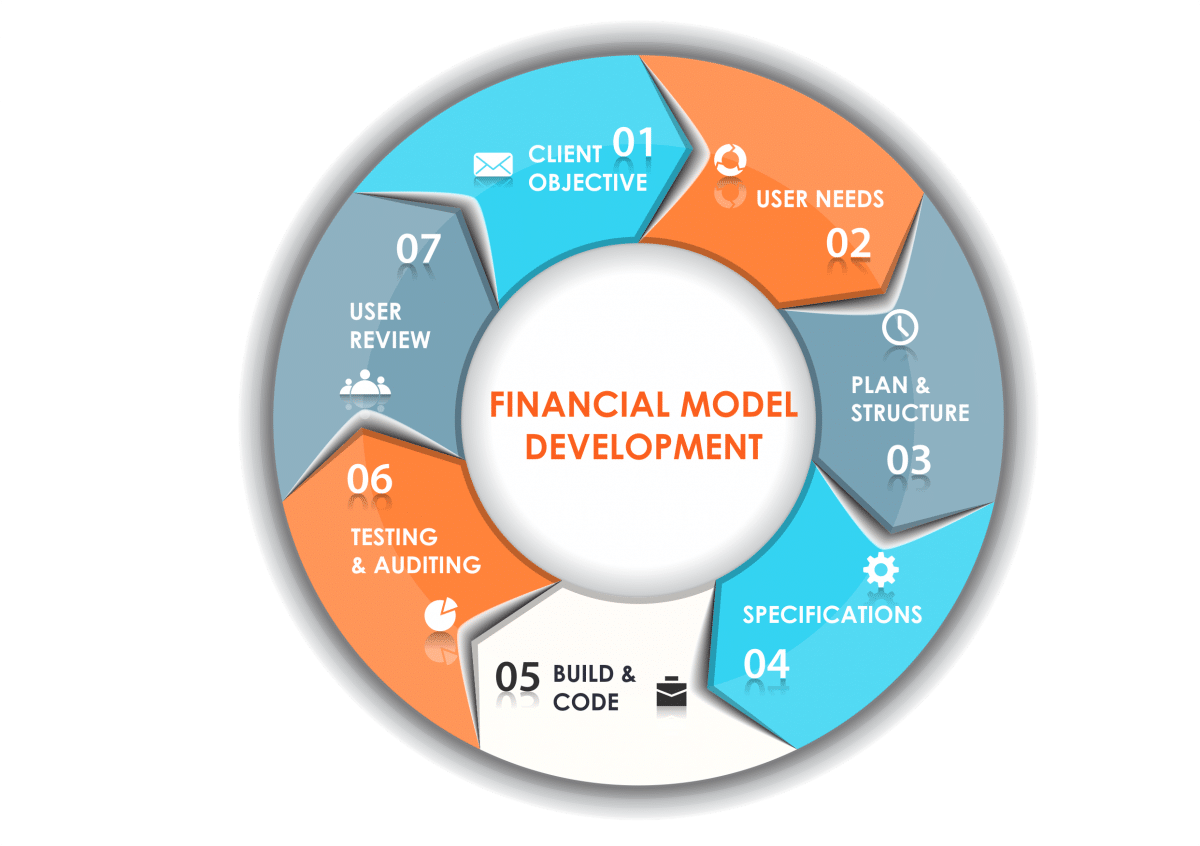
Financial Modeling: A Complete Overview
Financial modeling is a strategic process that involves creating a detailed mathematical representation of a company's financial performance, typically in the form of a comprehensive spreadsheet. This dynamic tool is extensively used by businesses, financial analysts, and investors to analyze and project the financial implications of various business decisions, assess performance, and make informed strategic choices.
1. Purpose of Financial Modeling:

- Objective: Financial modeling aims to create a structured representation of a company's financial situation to facilitate decision-making.
- Applications: Utilized for budgeting, valuation, investment analysis, strategic planning, and risk assessment.
- Beneficiaries: Financial analysts, corporate executives, investment bankers, and investors leverage financial models to gain insights into a company's financial health.
2. Components of Financial Modeling:
a. Historical Data Analysis:
- Data Collection: Involves gathering and analyzing historical financial statements, cash flows, and other relevant metrics.
- Purpose: Understanding past performance trends, identifying patterns, and assessing the impact of previous decisions.
b. Assumptions and Projections:
- Input Variables: Incorporates assumptions about future economic conditions, market trends, and company-specific factors.
- Purpose: Anticipates how changes in key variables could impact financial outcomes.
c. Financial Statements Integration:
- Income Statement, Balance Sheet, and Cash Flow: Integrates these fundamental financial statements to provide a holistic view of a company's financial position.
- Purpose: Allows stakeholders to assess profitability, liquidity, and overall financial stability.
d. Sensitivity Analysis:
- Variable Impact: Assesses how changes in key assumptions affect the overall model.
- Purpose: Identifies potential risks and helps decision-makers understand the model's sensitivity to different factors.
3. Types of Financial Models:

a. Forecasting Models:
- Objective: Predicts future financial performance based on historical data and assumptions.
- Applications: Budgeting, strategic planning, and setting financial targets.
b. Valuation Models:
- Objective: Determines the intrinsic value of a company or its assets.
- Applications: Mergers and acquisitions, investment analysis, and determining fair market value.
c. Scenario Analysis Models:
- Objective: Evaluates different scenarios and their potential impact on financial outcomes.
- Applications: Risk assessment, strategic decision-making, and contingency planning.
4. Tools Used in Financial Modeling:
a. Spreadsheets (Excel):
- Widely Used: Excel is the dominant platform for financial modeling due to its versatility and calculation capabilities.
- Advantages: Offers a familiar interface, extensive formula library, and data visualization tools.
b. Specialized Software:
- Advanced Tools: Some industries use specialized software for complex financial modeling, such as financial institutions using risk modeling software.
- Advantages: Tailored functionalities, enhanced automation, and specific industry features.
5. Importance of Financial Modeling:
a. Informed Decision-Making:
- Strategic Planning: Enables companies to make informed decisions about resource allocation, expansion, and investment.
- Risk Management: Identifies potential risks and allows for proactive risk mitigation strategies.
b. Stakeholder Communication:
- Investor Relations: Provides a clear and comprehensive presentation of a company's financial health to investors and stakeholders.
- Financial Transparency: Enhances transparency and accountability in reporting financial performance.
c. Performance Measurement:
- Evaluation: Facilitates the evaluation of a company's performance against its goals and industry benchmarks.
- Continuous Improvement: Supports ongoing assessment and refinement of business strategies.
Financial modeling is an indispensable tool for companies navigating the complexities of the business world. It empowers stakeholders with the ability to simulate different scenarios, analyze potential outcomes, and make strategic decisions that contribute to the financial health and sustainability of a business.
6. Scenario Planning:
- Objective: Scenario planning involves creating models for different hypothetical situations, allowing businesses to prepare for a range of potential outcomes.
- Applications: Crucial for risk management, strategic decision-making, and adapting to changing market conditions.
- Benefits: Enables companies to identify potential challenges and develop strategies to navigate uncertainties.
7. Cash Flow Modeling:
- Objective: Cash flow modeling focuses on predicting the movement of cash into and out of a business over a specific period.
- Applications: Essential for maintaining liquidity, managing working capital, and ensuring a company's ability to meet its financial obligations.
- Benefits: A critical tool for preventing cash flow crises and optimizing financial operations.
8. Investment Appraisal:
- Objective: Investment appraisal models assess the financial viability of potential investments or projects.
- Applications: Guides decision-makers in evaluating the profitability and feasibility of capital expenditures.
- Benefits: Assists in selecting investments that align with a company's strategic objectives and financial goals.
9. Merger and Acquisition (M&A) Modeling:
- Objective: M&A modeling is used to evaluate the financial impact of mergers, acquisitions, or divestitures.
- Applications: Critical for determining the valuation of target companies, assessing synergies, and predicting post-transaction financials.
- Benefits: Helps in making informed decisions during complex strategic transactions.
10. Continuous Improvement:
- Objective: Financial modeling is an iterative process that requires continuous improvement based on real-time data, market changes, and feedback.
- Applications: Ongoing refinement ensures that models remain accurate and relevant in dynamic business environments.
- Benefits: Enables companies to adapt to evolving circumstances and make agile, data-driven decisions.
11. Challenges in Financial Modeling:

a. Complexity and Accuracy:
- Challenge: Building accurate models can be complex, requiring a deep understanding of financial principles and market dynamics.
- Mitigation: Continuous education, training, and leveraging advanced software can enhance accuracy.
b. Data Quality and Availability:
- Challenge: The accuracy of models is heavily dependent on the quality and availability of historical and current data.
- Mitigation: Implementing robust data collection and validation processes is crucial to address this challenge.
c. Assumption Risks:
- Challenge: Financial models heavily rely on assumptions, and the inherent risks in these assumptions can impact model accuracy.
- Mitigation: Regularly reassessing assumptions and conducting sensitivity analyses help mitigate risks.
In conclusion, financial modeling is a dynamic and indispensable process that empowers businesses to make well-informed decisions, plan for the future, and navigate uncertainties. From forecasting financial performance to evaluating potential investments, the versatility of financial modeling makes it an invaluable asset in the toolkit of companies aiming for sustainable growth and success. Continuous refinement, adaptability, and a commitment to accuracy are key principles in maximizing the effectiveness of financial modeling in the ever-evolving landscape of business.



